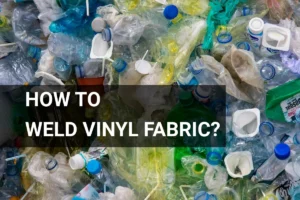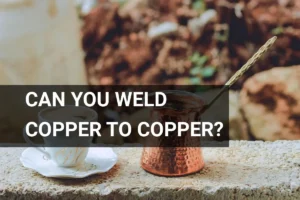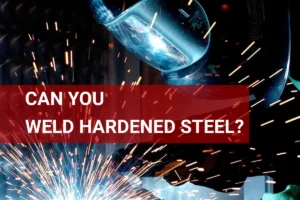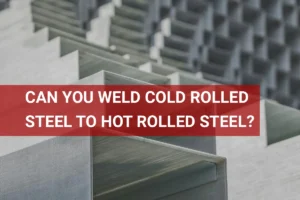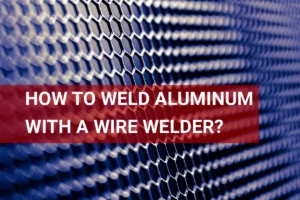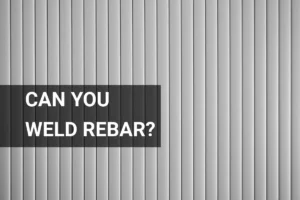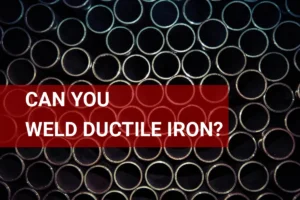Can You Weld Aluminum Rims? Understanding Techniques, Benefits, and Safety
Published on: April 28, 2025 | Last modified: March 4, 2025
By: Joe Carter
I often used to be asked, can you weld aluminum rims? It’s crucial to know since not all rims can be effectively welded. In my experience, doing it right can save you money and extend the life of your rims.
In this guide, we’ll explore various aspects related to aluminum rim welding, including types of aluminum rims, necessary prerequisites, steps to weld aluminum rims, safety tips, and common issues to watch out for. You’ll learn how to split two-piece welded wheels, what it costs to weld a rim, and where you can get your rim welded. Let’s dive into the details and clear up any confusion around can you weld alloy rims!
Contents
- Can You Weld Aluminum Rims?
- What Are Aluminum Rims?
- Types Of Aluminum Rims
- Prerequisites
- Steps to Weld Aluminum Rims
- Safety Tips
- Types Of Welding for Aluminum Rims
- Factors Affecting Aluminum Rim Welding
- What Could Go Wrong: Common Issues
- Can You Repair Cracked Aluminum Rims?
- Aftercare, Inspection, and Advanced Tips for Aluminum Rim Welding
- Benefits Of Welding Aluminum Rims
- Industry Applications for Aluminum Rim Welding
- What Are the Alternatives to Welding Aluminum Rims?
- Frequently Asked Questions (FAQs)
- Conclusion
- References
Can You Weld Aluminum Rims?
Yes, you can weld aluminum rims, but it’s tricky. Aluminum’s low melting point requires skill to prevent distortion. The best approach is TIG welding for precision and strength. Make sure to clean the area thoroughly before you start.
What Are Aluminum Rims?
Aluminum rims are wheels made from aluminum alloys, which optimize strength and weight. They typically weigh 20% to 30% less than steel rims while providing similar durability. Aluminum resists corrosion well. Many vehicles have rims that measure between 14 inches (35.56 Cm) and 22 inches (55.88 Cm) in diameter.
You might be wondering about welding aluminum rims. In my experience, welding these rims can be tricky due to aluminum’s melting point of 660°C (1220°F). It requires specialized techniques and equipment to avoid warping or weakening the rim.
Let me share a quick story. I had a friend with a cracked aluminum rim on his car. He considered welding the rim but learned it often costs around $100 to $150 for repairs, depending on the damage. The decision to weld or replace the rim is crucial for safety and performance, and it’s important to know where to get your rim welded.
Types Of Aluminum Rims
What are the types of aluminum rims for welding?
-
Standard Aluminum Rims
Standard aluminum rims are common on everyday vehicles. You can weld these rims, but assess their condition first. For a successful weld, clean the area, preheat gently, and use a TIG welder for best results.
-
Forged Aluminum Rims
Forged aluminum rims are lightweight and strong due to their manufacturing process. Welding requires skilled technique. Use appropriate filler metal and monitor the heat closely, as excessive heat can weaken the rim.
-
Cast Aluminum Rims
Cast aluminum rims are often more affordable and come in various designs. You can weld cast aluminum rims, but be cautious of cracks. Clean cracks thoroughly, use a low-heat method, and select a compatible filler. For those handling sensitive fuel containers, it is important to follow specific procedures to safely weld a gas tank.
-
High-performance Aluminum Rims
High-performance aluminum rims are meant for racing and performance vehicles. You can weld these, but a careful approach is essential. Always inspect heat treat specifications and follow manufacturer recommendations to maintain integrity. When welding, it’s crucial to consider the specific minimum shade for arc welding to ensure safety and effectiveness.
-
Custom Aluminum Rims
Custom aluminum rims are designed for aesthetics and unique fit. You might be able to weld them, depending on the design. Analyze metal thickness and use proper heat settings to preserve the intended look and function.
We have now covered the different types of aluminum rims. Next, we will examine the prerequisites for selecting the right one.
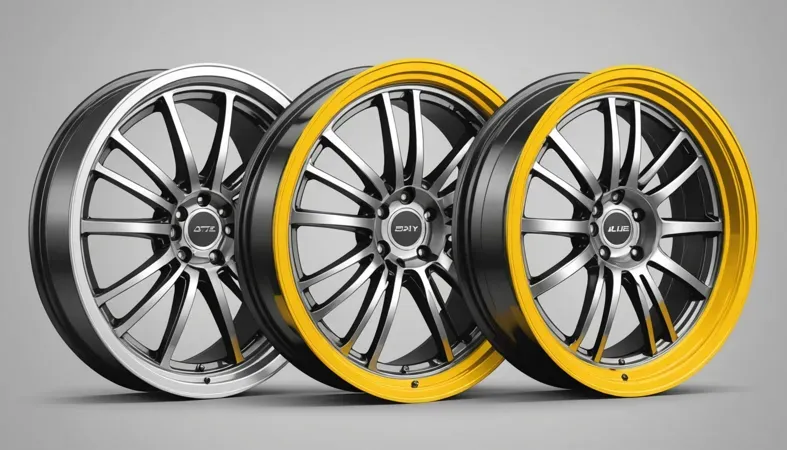
Prerequisites
What do you need to start welding aluminum rims?
- TIG Welder: Use a TIG welder, such as the Miller Dynasty 210. It’s essential for precise aluminum welds.
- Filler Rod: Get 4047 aluminum filler rods like Harris 4047. They blend well with aluminum for stronger joints.
- Welding Cup: Use a cup size between 12 and 16, like the Furick Cup, to improve gas coverage and ensure clean welds.
- Cleaning Solutions: Aluminum cleaner sprays, such as WD-40 Specialist, are crucial. They prepare the rim’s surface and prevent contamination.
We covered the prerequisites for welding aluminum rims here. Next, we will cover the steps to weld aluminum rims.
Steps to Weld Aluminum Rims
Here are the steps to weld an aluminum rim successfully.
-
Clean the Rim Thoroughly
Start by cleaning the rim to remove dirt, grease, and oxidation. Use a wire brush or a grinder with a flap disc designed for aluminum. Aim for a clean area of at least 2 inches (5.08 Cm) around the crack. A clean surface ensures a strong bond during welding. Don’t skip this step! I once rushed and ended up with a weak weld. Avoid using steel brushes, as aluminum can easily contaminate them. Choosing the correct rod is crucial to ensure the weld’s integrity; you can refer to this welding rod selection guide.
-
Set Up Your Welding Equipment
Select a suitable welding process. Typically, you’ll use MIG (Metal Inert Gas) or TIG (Tungsten Inert Gas) for aluminum rims. Set the voltage between 22-26 volts for MIG welding. For TIG, around 130-150 amps works well.
The type of aluminum can affect your settings. For instance, with a 6061 aluminum wheel, you might need more amperage due to its thickness. Adjust based on your rim’s specifications!
-
Weld the Cracked Area
Once everything is prepped, start welding the cracked area. Begin on one side of the crack and move steadily across. Maintain a distance of about 1/8 inch (3.175 Mm) between the nozzle and the rim to create a puddle. Use a weaving motion for better fusion.
During this step, I found that moving too fast can lead to insufficient penetration, while going too slow can burn through. Keep your hand movements steady and aligned with the arc!
-
Post-welding Treatment
After you’ve welded the crack, let the rim cool naturally. Quenching with water can cause unnecessary stresses and brittle welds. Once cool, grind down any excess material to smooth the surface. Aim for a flat finish without gouging the rim.
Ensure a proper finish because rough spots can lead to issues during balancing. A smooth surface helps during tire fitting later.
-
Test the Welded Rim
Before reinstalling the rim on your vehicle, perform a visual check for any missed spots. If you find areas needing more work, weld them again. Consider pressure testing if you’re dealing with high-performance applications.
This test shows how strong your weld is. In my experience, skipping this can lead to trouble on the road!
So far we covered the steps for welding aluminum rims. Next, let’s look at safety tips for the welding process.
Safety Tips
Let’s quickly cover essential precautions for welding aluminum rims.
- Ventilation: Ensure good airflow to remove harmful fumes; use a fan or a portable exhaust system.
- Protective Gear: Wear heat-resistant gloves and goggles; I recommend Lincoln Electric gloves for extra durability and protection.
- Chill Factor: Preheat aluminum rims to 200°F (93°C) to reduce warping and maintain integrity during welding.
- Cleanliness: Clean the rims to remove oil and dirt; I often use CRC weld cleaner for an optimal surface.
Staying safe is crucial; accidents can happen, so gear up!
Types Of Welding for Aluminum Rims
Let’s discuss the different types of welding: MIG, TIG, Arc, Spot, and Resistance welding.
-
MIG Welding
MIG (Metal Inert Gas) welding is popular for aluminum rims. It uses a continuous wire feed and gas. The wire melts, fusing the aluminum together. You can easily weld aluminum rims with MIG, especially if they’re thin, under 1/4 inch (6.35 Mm) thick. Understanding just how bright a welding arc can be is crucial for ensuring proper safety measures are in place during the process.
-
TIG Welding
TIG (Tungsten Inert Gas) welding offers precision. It’s ideal for thin materials or larger projects. You can control the heat precisely, minimizing burn-through. This method works well for all types of aluminum rims, including custom designs. Safety in welding is crucial and understanding what causes most electric shock in the welding industry is vital for preventing accidents.
-
Arc Welding
Arc welding uses an electric arc to melt metals. However, it isn’t the best option for aluminum rims due to the high heat required. It may work on thicker rims, but there’s a risk of distortion. Be cautious when considering this method.
-
Spot Welding
Spot welding joins metal using heat from electricity. It’s quick and works best for overlapping joints. While it’s uncommon for full rim repairs, it can fix small areas where aluminum is joined. Just know exactly where to apply it!
-
Resistance Welding
This method fuses metal by applying heat and pressure. It requires specific setups and isn’t as versatile. It works for parts with overlapping edges but may not be ideal for one-piece wheels. If your rims are severely damaged, you’re better off with TIG or MIG.
We have now covered the various types of welding for aluminum rims. Next, we will examine the factors affecting aluminum rim welding.
Factors Affecting Aluminum Rim Welding
What factors influence welding aluminum rims? Let’s dive into the details.
-
Aluminum Alloy Composition
The alloy used in aluminum rims is crucial. For example, 6061 and 7075 alloys have different welding properties. 6061 contains Silicon and Magnesium, offering great weldability, with a strength rating of about 3.3 MPa. In contrast, 7075 is stronger at roughly 5.0 MPa but is challenging to weld due to its zinc content, which can cause brittleness. When welding on vehicles, it is important to know what to disconnect.
-
Welding Technique Used
The technique you use is critical. TIG (Tungsten Inert Gas) is preferred for its precision, suitable for thin materials (Down to 0.125 Inches or 3.2 Mm) and minimizing distortion. MIG (Metal Inert Gas) is faster but may introduce defects, like porosity, in thin sections due to excessive heat.
-
Joint Design
Joint design matters significantly. A groove-style joint typically provides better penetration. Tight tolerances enhance strength, while poor joints risk failure, especially under pressure. Cracks often develop in 2-piece welded wheels if not designed properly, leading to costly repairs.
-
Heat Treatment Considerations
Heat treatment can alter an aluminum rim’s properties. Some alloys, like 6061, can age harden to boost strength post-welding. However, excessive heat can weaken the structure and decrease fatigue resistance. Understanding temper is crucial; for example, 6061-T6 is strong and ideal for high-performance applications.
-
Environmental Conditions
Welding in harsh environments impacts the outcome. Humidity and temperature can create difficulties; for instance, moisture may cause contamination, resulting in poor weld quality. Additionally, ambient temperatures below 50°F (10°C) can affect aluminum’s workability.
So far we covered the factors that influence aluminum rim welding. Next, let’s look at common issues that may arise.
What Could Go Wrong: Common Issues
Here are some unique technical problems with aluminum rims.
-
Poor Penetration
Aluminum rims can suffer from poor penetration during welding, leading to weak seams. Check the weld depth; it should reach at least 1.5 mm (0.06 In). Increase voltage or adjust travel speed for better penetration.
-
Cracking Of the Weld
Aluminum rims may crack due to rapid cooling. Look for visible fissures post-weld. Preheating the aluminum to around 150°C (302°F) can reduce this risk.
-
Inadequate Fusion
Aluminum rims might show inadequate fusion, where the weld filler doesn’t bond well. Inspect for gaps in the seam. Clean the base metal thoroughly and use appropriate filler material to achieve proper fusion.
-
Distortion Of the Rim
Aluminum rims can warp if heat is uneven. Check for straightness post-weld with a straight edge. Use controlled heat input and cooling to minimize distortion.
-
Contamination Problems
Aluminum rims can be affected by contaminants like oil or dirt. Inspect the weld area for impurities. Cleaning with a solvent and using proper shielding gas can prevent issues.
Can You Repair Cracked Aluminum Rims?
When aluminum rims crack, can you really fix them? Absolutely! But not all cracks are created equal.
- Small cracks—like hairline fractures—can usually be welded.
- Wider cracks may not hold up after a weld and often need replacement.
Aftercare, Inspection, and Advanced Tips for Aluminum Rim Welding
Here’s essential advice on caring for, inspecting, and refining your aluminum rim welds.
Aftercare Tips
After welding aluminum rims, cool them down slowly to prevent warping. Use a heat-resistant blanket to cover the area for about 30 minutes. Finally, spray the welds with a corrosion inhibitor to protect against moisture and road salt. Proper techniques can also help reduce welding spatter to ensure a clean finish.
Inspection
Inspect welds for signs of poor fusion. Use a magnifying glass for gaps less than 0.5 mm. Check for tiny cracks with a dye penetrant inspection kit, like NOXYDE. I find the Visueltics QT-500 useful, providing clear indications of defects.
Expert Tips
If you have years of experience welding aluminum rims, implement a controlled cooling process using a ceramic-coated wrap for slow temperature reduction. To minimize warpage, adjust your setup for consistent joint geometry—aim for a tight 0.030 inches (0.76 Mm) for precision. Don’t forget to adjust your TIG settings for thin materials; target a lower amperage around 90 A (Or Lower) for 1/8 inch (3.17 Mm) aluminum.
Benefits Of Welding Aluminum Rims
The main benefit of welding aluminum rims is cost efficiency. Instead of buying new rims, welding lets you repair and extend the life of your existing ones.
Additionally, it improves performance, restores structural integrity, reduces waste, and can increase your vehicle’s resale value. That’s a lot of perks for something as simple as welding!
Industry Applications for Aluminum Rim Welding
I’ve known people who use aluminum rim welding to repair damaged wheels. However, it has many applications, including:
- Race Car Repairs: Welding aluminum rims restores strength to cracked racing wheels. It’s popular in motorsports due to the high-performance nature of these rims.
- Custom Wheel Design: Many custom wheel manufacturers weld rims for unique designs, allowing personalization and durability. This trend is gaining popularity among car enthusiasts.
- Heavy Equipment Maintenance: In industries like construction, welding aluminum rims on heavy machinery is essential for efficient operation. It’s widely adopted to reduce downtime.
- Emergency Repairs: Some roadside services offer aluminum rim welding for quick fixes during racing or major outdoor sports events, which is extremely useful in fast-paced situations.
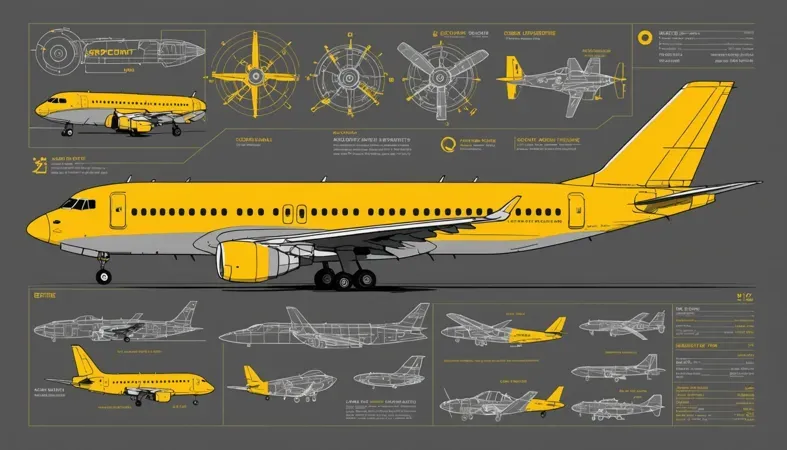
What Are the Alternatives to Welding Aluminum Rims?
Instead of welding, consider alternatives like epoxy adhesives, such as J-B Weld. These solutions can effectively bond aluminum and hold up well under pressure. They might be a better option if you want to avoid the heat distortion that welding can cause.
Another great method is using cold metal joiners, like Loctite’s Cold Weld. They’re perfect for small cracks and are easier to apply. Having been through similar situations myself, I often find these alternatives save both time and money while still achieving strong repairs.
Frequently Asked Questions (FAQs)
Now let us look at some questions I typically get asked.
Is It Safe to Weld an Aluminum Rim?
Yes, it is generally safe to weld an aluminum rim if done properly. Welding can restore structural integrity, but poor technique or inadequate materials can lead to failure. Always use the right filler rod and follow recommended procedures to ensure safety and reliability.
Can You Fix a Cracked Aluminum Rim?
Yes, you can fix a cracked aluminum rim through welding. However, the success of the repair heavily relies on the crack’s location and size. Many experts recommend seeking a professional welder with experience in aluminum welding for the best results.
Is It Worth Welding a Cracked Rim?
Yes, it can be worth welding a cracked rim, but it often depends on the rim’s value and condition. Retail prices for new aluminum rims typically range from $100 to $800. A weld repair might cost between $75 and $150, offering a more budget-friendly solution for some individuals.
Is It Safe to Drive on a Welded Rim?
Yes, driving on a welded rim is safe, as long as the repair is done correctly. Ensure the weld is sturdy and free of defects. A poorly repaired rim could lead to safety hazards, so always trust an experienced welder for the task.
Where Can I Get My Rim Welded?
You can get your rim welded at local auto repair shops or specialized welding services. Many businesses that work with wheels have the right tools and experience, ensuring your aluminum rim is repaired correctly. Always check customer reviews for quality assurance.
Conclusion
Phew, that’s a lot to cover. We discussed the basics of aluminum rims, the types available, prerequisites for welding, and essential steps in the process. I also touched on safety tips, different welding methods, factors affecting the welding outcome, common issues that might arise, and the importance of aftercare.
So, can you weld aluminum rims? Yes, you can, but there are factors to consider. We looked at specific details, such as the types of welding suitable for aluminum, the costs involved, and alternative methods. Using the right techniques can help you restore your rims effectively, so keep practicing and always prioritize safety.
If you’re interested in expanding your knowledge on welding techniques and practices, feel free to explore more by visiting What is Welding.
References
- American Welding Society (AWS): https://www.aws.org
Joe Carter is a retired welding professional with over 40 years of hands-on experience in the industry, spanning ship repair, structural welding, and even underwater projects. Joe is a master of MIG, TIG, and Stick welding. Passionate about mentoring the next generation of welders, Joe now shares his decades of expertise and practical insights to help others build rewarding careers in welding.
Aluminum Alloys, Aluminum Rim Repair, American Welding Society, Automotive Welding, MIG Welding, Safety Tips, TIG Welding, Welding, Welding Aluminum Rims, Welding Safety, Welding Techniques
